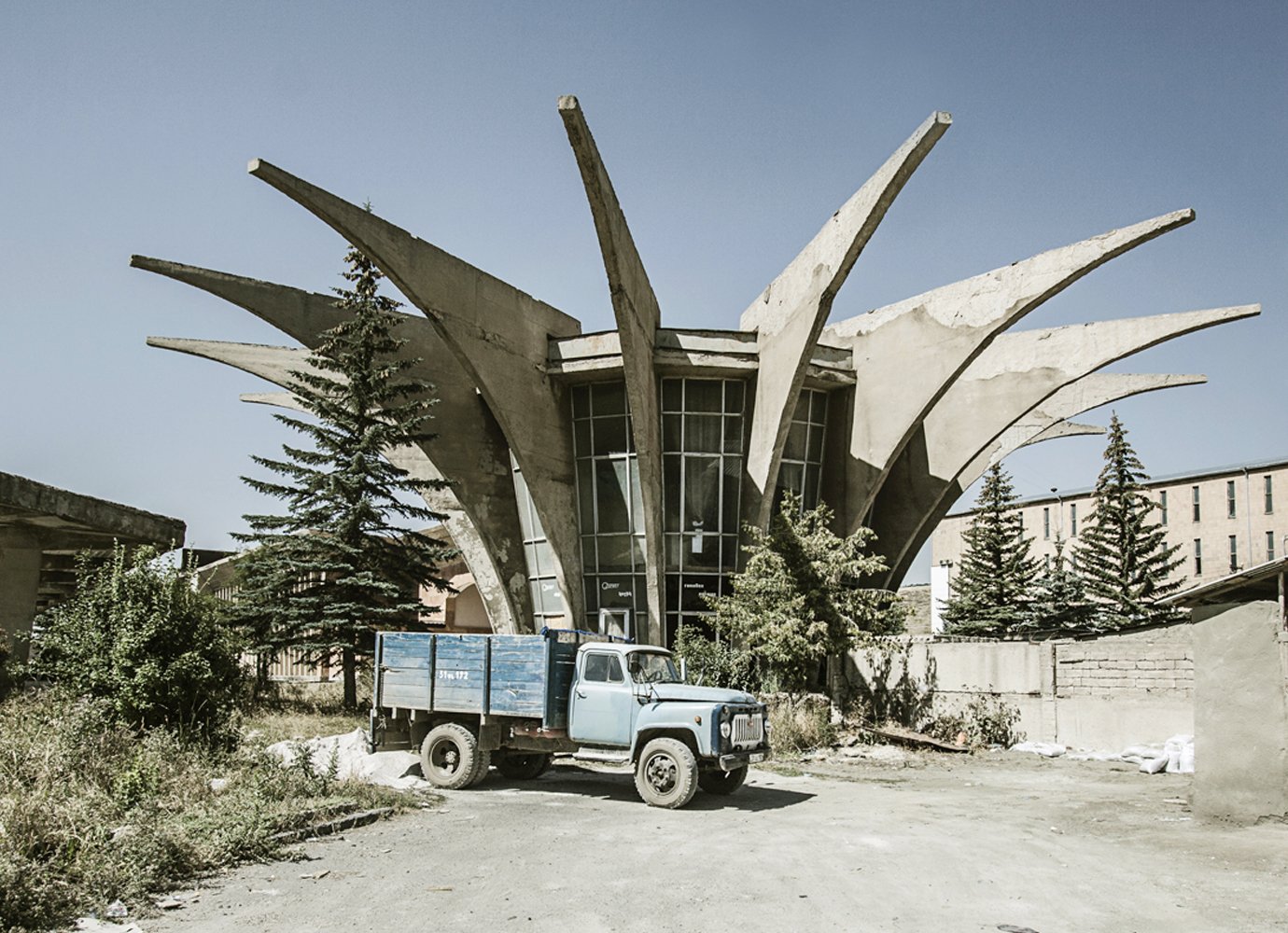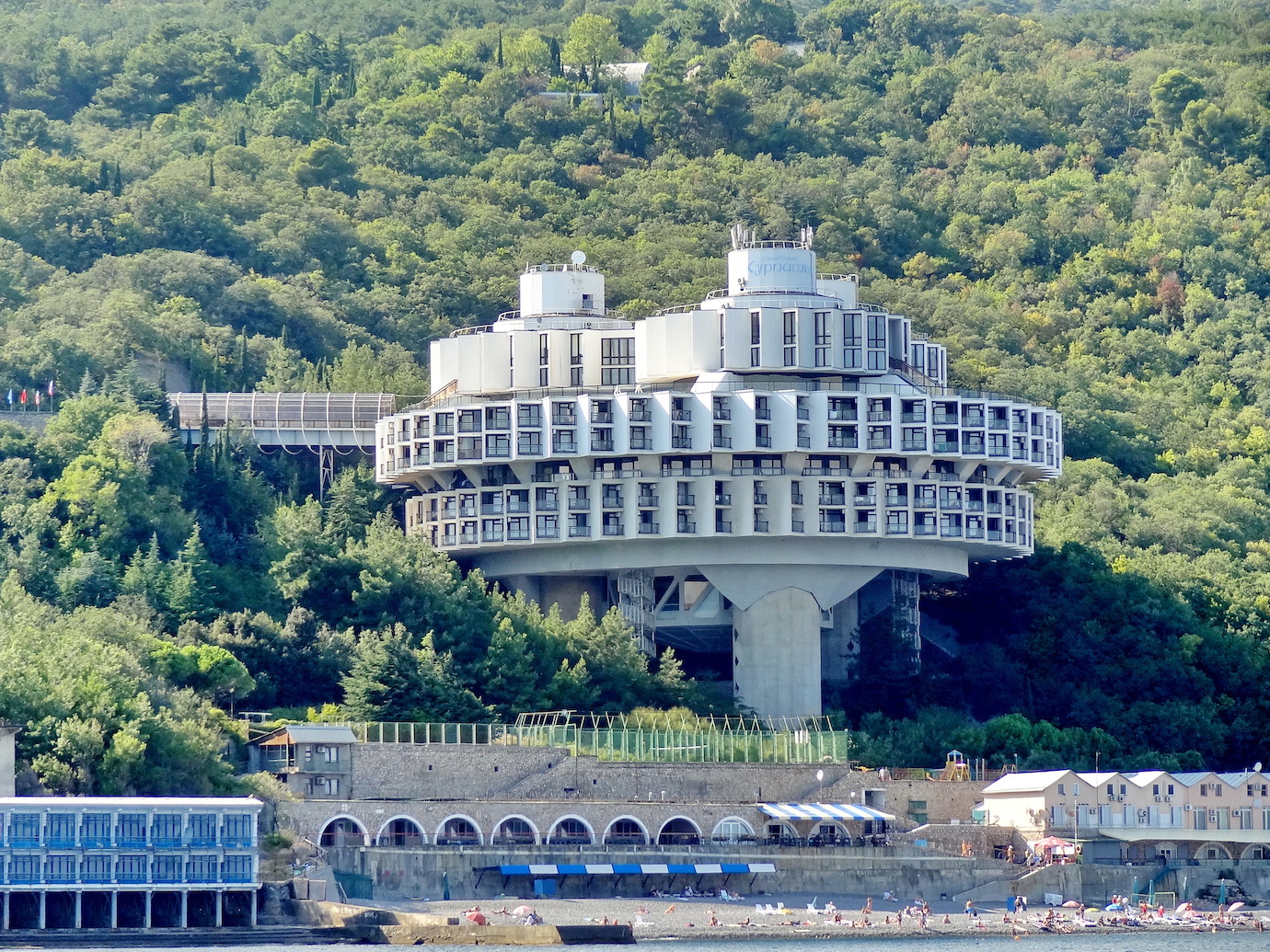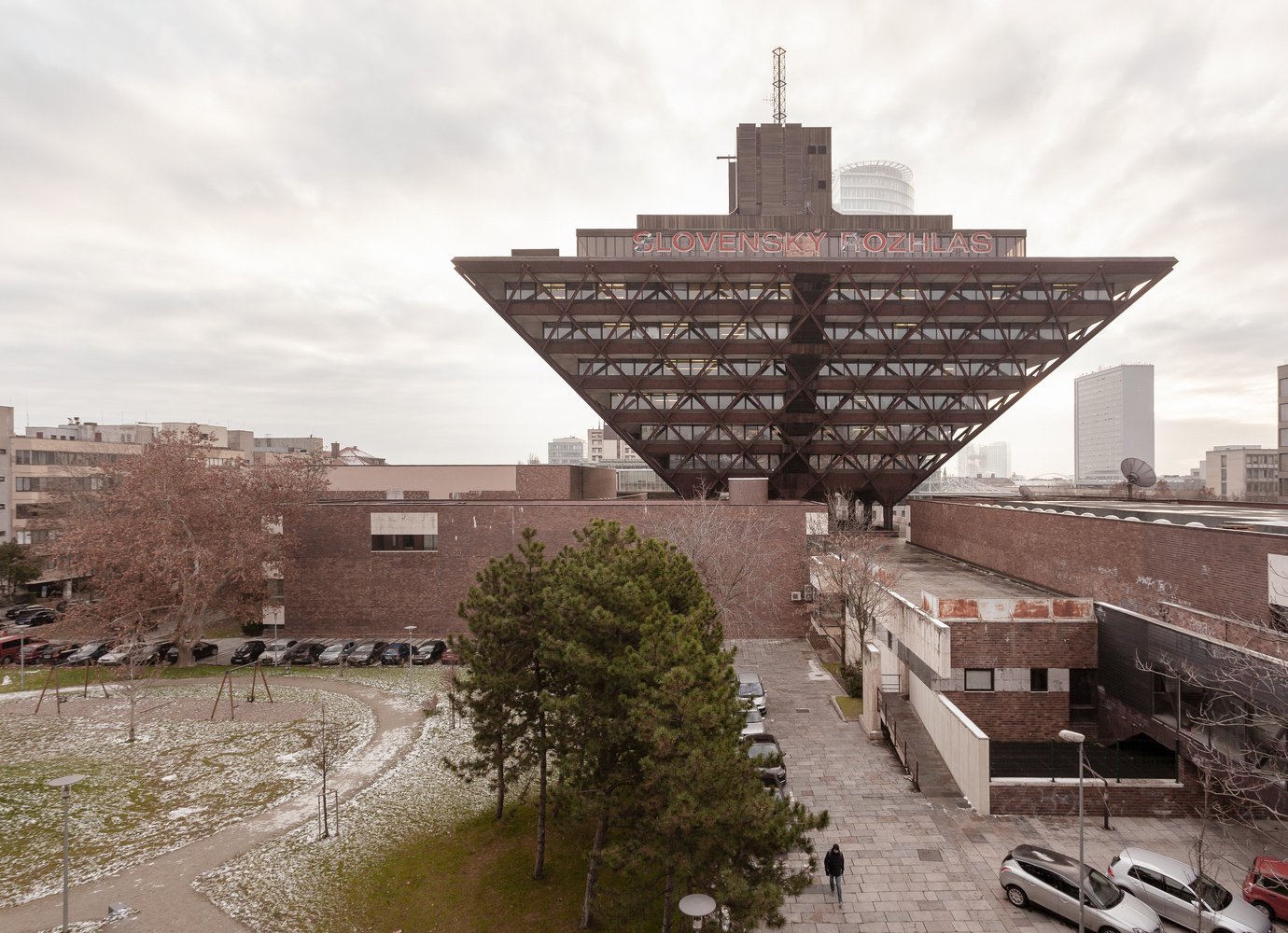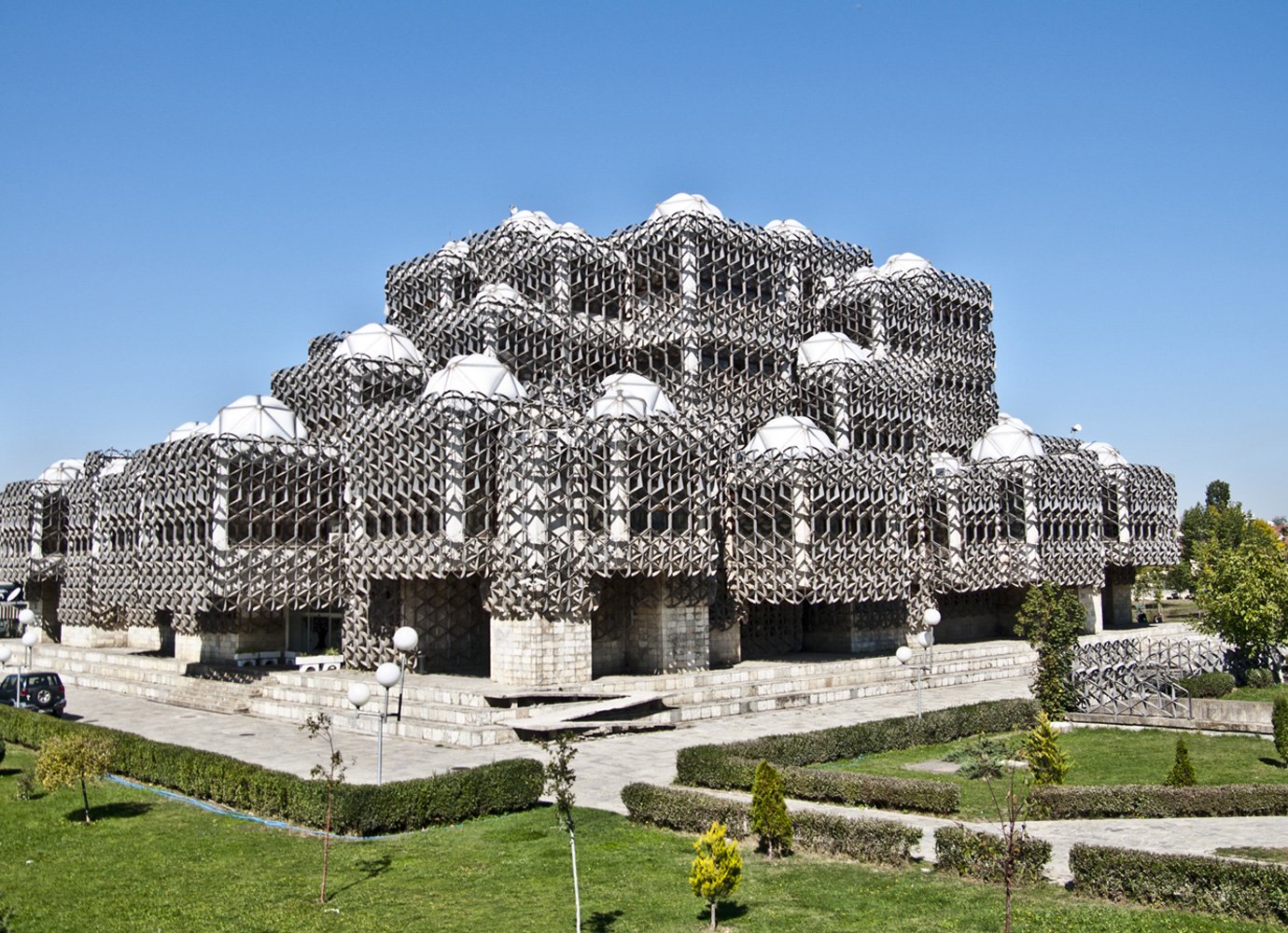Eastern Bloc architecture: eccentric public buildings | part 4
Eastern Bloc Architecture


This article is from our series Eastern Bloc Architecture: 50 Buildings that Defined an Era, a joint project between The Calvert Journal and Arch Daily
Image: Bank of Georgia. © Labdabudi via WikiMedia Commons (CC BY-SA 4.0)
The Bank of Georgia’s Headquarters (1975)
George Tschachawa and Zurab Dschalagonia. Tbilisi, Georgia
The Bank of Georgia’s headquarters, previously known as the Ministry of Highway Construction, is considered to be one of the most unique and irregular examples of Soviet architecture to have ever been built. Located on the peripheries of Tbilisi, Georgia, the project’s unusual architectural style is an inimitable fusion of Russian Constructivism and Brutalism.
The project was originally designed in 1975 by the architects George Tschachawa and Zurab Dschalagonia, with Tschachawa already well-known for his dynamic-looking structures. Its conceptual design is inspired by nature, following what is known as the “Space City Method”. The architects wanted to represent the relationship between light, nature, and architecture, so they created five horizontal two-storied buildings with opened and illuminated rooms between each part of the buildings. The sections are stacked on top of each other in an irregular manner, and to let nature grow and flow within and around the headquarters ’ structures, the architects elevated the foundations so that the buildings resemble trees in a forest.
In 2007, the building was listed as a national monument under preservation order, and in 2010-2011, the whole building was renovated and rebuilt by AG&P, Architectural Group and Partner LTD. AG&P maintained the original design concept of the building (the relationship between architecture and light) but with a more contemporary approach, installing light-transmitting concrete in the interior’s walls, ceiling, and partitions.
Image: Hrazdan Bus Station, Armenia © Roberto Conte
Hrazdan Bus Station (1978)
Henrik Arakelyan. Hrazdan, Armenia
Built by architect Henrik Arakelyan in 1978, the Hrazdan Central bus station stands as an abandoned emblem of Armenian Soviet Modernism.
The main structure consists of a two-storey rectangular plan with a floor-to-ceiling glass facade on all sides, connected to a dynamic-looking tower. The tower, which is the “star” element of the project, is a glass cylinder pierced with triangular concrete slabs all around, giving the building a sense of movement and its extraordinary character.
Today, many product and apparel designers have transformed the building’s unique structure into clothing, furniture, and accessories. In addition, the Art and Urban Research Bureau B.A.C.U is working on restoring and protecting this cultural and architectural gem.
Image: Wedding Palace, Almaty, Kazakhstan © tache via Shutterstock
Wedding Palace (1971)
M. Mendikulov, A. Leppik, N. Orazymbetov. Almaty, Kazakhstan
Wedding palaces allowed Soviet couples and their families to celebrate their union in raucous festivities that sometimes lasted several days. Completed in 1971, the Almaty Wedding Palace, or “Zhas-Otau”, was built by M. Mendikulov, A. Leppik, and N. Orazymbetov. Situated on a hilltop across the Auezov Theatre, the building’s circular structure and floor-to-ceiling glass facade are wrapped with ornamental ironwork and sit on a rectangular base. Its northern facade features a grand mosaic mural of a Kazakh couple with majestic rampant white horses and a waterfall. The lavish interior, which is still used as a wedding venue, boasts marble columns, painted ceilings, and ornamented balustrades.
Image: Central Post Office, Skopje, Northern Macedonia © via Wikimedia Commons (CC BY 2.0)
Central Post Office (1963)
Janko Konstantinov. Skopje, Northern Macedonia
Although nicknamed as the “city that rose from the ashes”, Skopje’s resurrection after the 1963 earthquake, and the Yugoslav reconstruction projects that followed, did not impress its citizens, who claimed that the culture and history of the city got lost along the way. This is mainly due to the fact that the urban planning style of the city — defined by architects from all over the world — became a combination of historic, brutalist, and just plain extraordinary. One of these remarkable buildings was the Central Post Office.
Designed by Macedonian architect Janko Konstantinov, who had worked with Alvar Aalto, the modernist building’s aesthetic was completely avant-garde and futuristic to the people of Skopje at the time. It was built in three stages: 1974, which saw the construction of the main building and tower, inspired by the fortress across the Vardar river; 1982, which saw the completion of the striking circular element (described as a brutalist flower or brutalist insect), which was also built as an ode to Japanese architect Kenzō Tange, who took part in rebuilding the city post-earthquake, and finally, in 1989. In addition to its unique structure, the project featured Cubist murals of Macedonian artist Borko Lazeski. However, after a devastating fire in 2013, the murals and cupola were destroyed, and the building has since been closed.
Image: Baku State Archives Simona Rota
State Archives (1977)
Yuzef Kadımov, Şafiga Zejnalova. Baku, Azerbaijan
Due to its rich history, architecture in the city of Baku reflects influences from several eras and cultures: including the Islamic, Russian Imperial, Victorian, deconstructivist and modernist periods. Post mid-20th century, however, the USSR wanted to improve industrialisation and quality of life, so they decided to remove any unnecessary ornamentation and elaboration in the fields of design and construction. In this period, the austere building of the State Archives in Baku was built.
The monumental State Archives Building in Baku, Azerbaijan was constructed in 1977 by architects Yuzef Kadımov and Şafiga Zejnalova. The block-like building moves away from Imperial and Islamic influences, but still reflects the Soviet realist and modernist architecture styles of the time. The structure, which now serves as a governmental building responsible for collecting, maintaining, and updating the national archives of Azerbaijan, is visually divided into two parts: a lower part (first 2-3 storeys) which is ornamented with openings, windows, and brise-soleils on all four sides of the structure, and the upper part, which is almost entirely enclosed with minimal openings.


